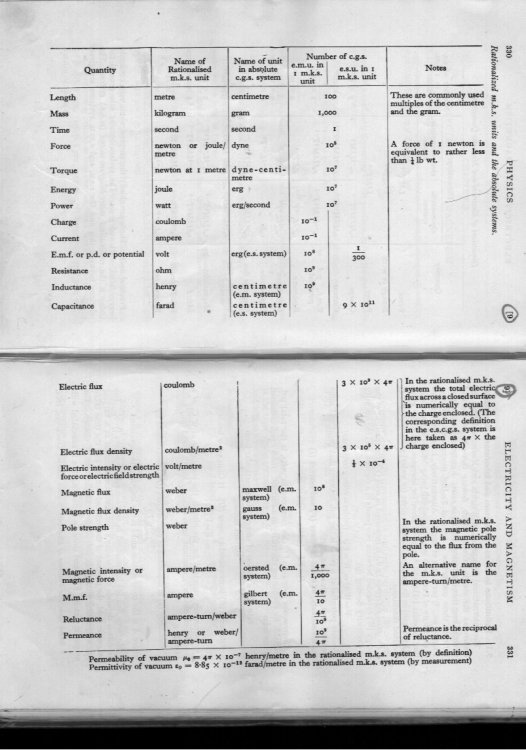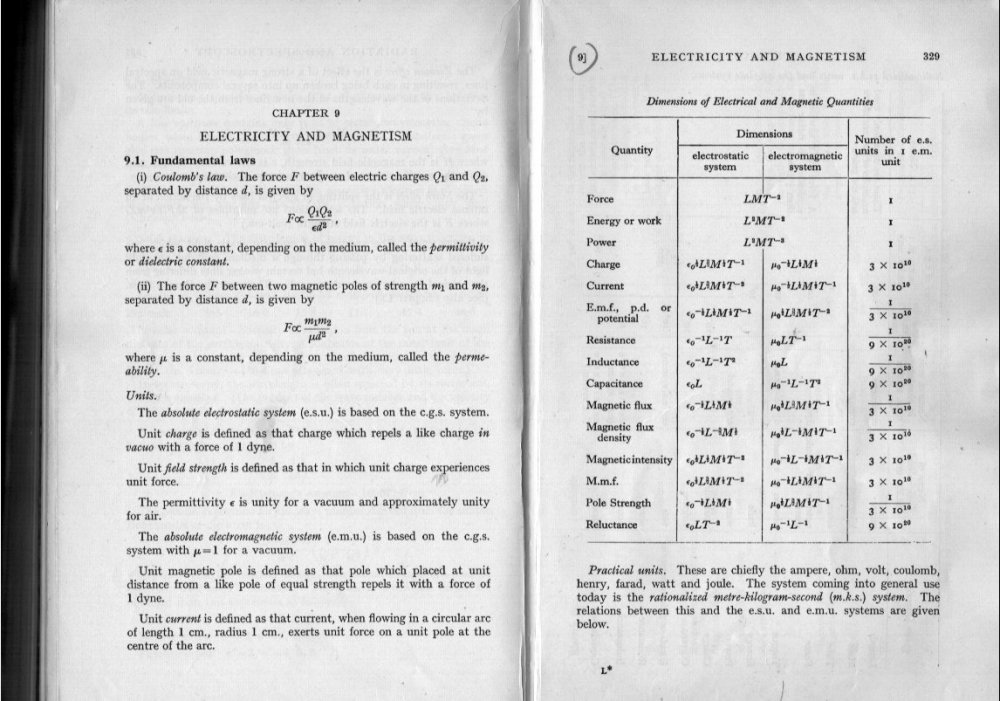-
Posts
18486 -
Joined
-
Last visited
-
Days Won
108
Content Type
Profiles
Forums
Events
Everything posted by studiot
-
The terms money, wealth and currency are very very closly linked together, although each has its own links to other aspects of society. In economic modelling of societies I would also agree that the economic concept of money is linked to energy. However the money supply and the energy supply are different things and in some cases the link is much stronger / weaker than in others. For instance in societies where there is a surfeit of energy ( an example would be those where money was measured in camels) the link is extremely weak. In others; I recently went to some lectures at the University of Dundee studying the sadly delterious economic effect of the introduction of 'money' to societies in South Pacific islands where it had not perviously existed. So I would hope that modern socio-economics had moved on from (over) simplifications to more complex models capable of dealing with these types of society.
-
Yes you have emphasised my point that the Mathematics and the Science can be separated. So if you like you can add another separation by introducing a system of dimensions. Just as in the flower, fruit and veg market you have the horticultural system, the system of weights and measures and the Mathematics (usually simple arithmetic). All are quite independent of each other. I really don't understand this. What is y?
-
Is jumping over a hole a high jump? However you are right to point out that I need to be more careful with my choice of examples, thank you +1 Because it's true? Maybe swansont remembers and used these units, but anyway here are some tables. Note very carefully that certain quantities (as I mentions) have different units and dimensions in different systems. (The equations are also different )
-
No it doesn't. Did you do what I asked and substitute x = 100 into both equations. Were both sides the same in both cases? Here is a Physics question for you to chew on, since you eschew pure maths and chemistry ones. Why is inductance measured in Henries in the MKS system and centimetres in the cgs system Why is EMF measured in voltage in the MKS system and ergs in the cgs system since they are different physical quantities? What happened to the dimensions?
-
Thank you Eise for you input, which as alwys respects the material and views posted by others whether you disagree or not. I note you have picked up on several points raised by various others. Between say 1900 and 1920 the distinction would have been taught to a 12 year old in primary school. Until about 1960 this was pushed up the ladder to early secondary school at about 13 or 14. I am not sure what happened after that. The point is that the first of those expressions is an identity and the second an equality. The distinction as taught to 12 -14 year olds is that an identity is true for every x, an equality is only true for some x. At university deeper understanding is studied in the set theory of equivalence realtions. But it is far from unusual in Mathematics for words or symbols to perform multiple duties. Look in any Dictionary of Mathematics and you will see that many of the terms have multiple meanings and use. This is the place where 'context' is of use in Mathematics. Yes indeed multiple meanings. Actually you can add 2 to the vector (1,2). All that happens is that you move from the mathematics of a vector space to the mathematics of an affine space. One application of this has importantance in modern relativity. But the mathematical definition of a vector is very different from the one normally employed in Physics, and you have used here. So you can, for instance, add a constant (which is not a vector) to a vector in a Fourier series. Maybe so, but Physics is not the only Science and the question here was about Science in general. This is not an exercise in "Physik uber alles" That is a matter of opinion. The person who originally wrote that equation was a very famous Professor of Chemical Thermodynamics at the University of California, Santa Barbara. I used it because it is now standard and I did not measure the themochemistry part. So in short, some do some don't. The liberating part of Science is that, like the English Language, no one has domain over expression. Long may that continue. Well that is so as far as it goes, but it is woefully incomplete. What symbol is used for the electrochemical neutrality of a chemical equation? What symbol is used for a nonstoichiometric equation? for instance in the presence of excess of one reagent? If a reagent appears also as a product, can you legitimately 'cancel' part or all of that quantity, as you most assuredly can in a mathematical expression for example 2x + 3 = 6 + 3 yields x = 3 But if 3 is the concentration of a necessary reagent, what happens if you cancel it? Did you attempt the nonstochiometric question I asked Strange? You can extract 6 dimensionally correct equations from the nonstoichiometrical statement of the reaction and solve them for the 6 unknowns in a proper mathematical way. This is an example of Applied Mathematics in action, whereby the Mathematics is separated from the Science of the situation and solved, providing useful information about the Science of the situation. If you answered the chemical question I posted earlier
-
It must be your turn to explain what you mean, because I don't understand the question. Mathematics has no 'context'. The meanings are different. Period. I'm sorry the response was cryptic but I assume you understand enough mathematics to know that in one case the expression is true for all x, whereas in the other it is only true for two specific values of x and untrue for the rest of the infinite possibilities available. Why do you think I will answer your questions, when you do not answer mine?
-
Thank you for correcting that oversight, Of course I should have said Answer the height squared = 4 metres squared. However that does not invalidate the argument. I too have a degree in applied Maths. So what? What does your esteemed cousin say about this? What happens if he substitutes x = 100 into both expressions?
-
Of course. In the expression (x - 1) (x - 1) = x2 +1 - 2x the equals sign is used differently from its use in the expression x2 + 4x + 4 = 0 I have no idea about your trousers but your following exactly exemplifies my stance. There is mathematics and there are applications (or there are other disciplines that can use Mathematics however you like to describe it). And they are separate and distinct things. How high did he jump? Answer the height squared = 4 metres. Now as an invigilator in the high jump I can say there is only one answer viz 2 metres. But as a Mathematician I cannot pretend that -2 is not also a solution of the equation x2 = 4. Notice also this is entirely consistent usage As an invigilator I use units of metres - ie my 4 and 2 have dimensions. As a Mathematician no units are used - they are just numbers.
-
There are two approaches to teaching and learning Organic Chemistry. The traditional approach which I learned at school and many schools still operate. That is by grouping together and studying many similar compounds together via homologous series. So using alcohols as an example you learn the comparative properties of methanol, ethanol, butanol, propanol and so on. The automatic repetition inherent in this of the 'alcohol' part (-OH) helps fix the idea of an alcohol in one's mind, rather as others have said. When I got to university their approach was a big shock because they di things differently. Organic Chemistry was studied and classified under different heading. Those of reaction types and mechanisms - substitution - esterification - condensation - nucleophilic - electrophilic and so forth. These affect all types of homologous series so these were lumped in together and mixed up. this was the modern approach. So there you are, try getting an old fashioned textbook (one with chapters labelled aldehydes, ketones, alcohols etc) and reading it. BTW you didn't say what stage you are at.
-
Hi Butch, here is a quote to get your teeth into
-
Less strict than what? Mathematics itself employs the equality sign for more than one meaning. An assertion without proof. I do agree that much of dimensional analysis can be put into mathematical form, just as can much of other aspects of Science. But how is Science able to throw away part of the consistent maths in my example of selecting only the real part of a complete solution. In other words what are 5 i metres, or what is the arcsin of 3 ?
-
It was asserted (not by me) that dimensions are part of Mathematics. I am suggesting (and backing it up properly) that dimensions are what differentiates Mathematics from other Sciences. (This is not the place to argue whether Maths is a science or not - I don't care) Dimensions are what give meaning (in the physical world) to mathematical statements such as 5 x 3 = 15. Mathematicians don't care if there are any objects or groups of objects with the properties '5' & '3' They just deduce that if there were then the result would be 15. Nor do they care what particular value a numerical constant used in other sciences such as gamma might have. But that value may matter vey much in the other science. All I am trying to do is hold an open discussion about these things without the other person starting with a closed mind and just automatically and unthinkingly rejecting everything.
-
Gentlemen, you are just repeating yourselves, without any supporting reasoning or evidence. If gamma had a value of 1 then the laws of Physics would be different, but 5 x 1.4 would still be 7,, which is the mathematics. Any first year mathematician will be exposed to countless analysis texts and lectures that stress the mathematics of 5 is extracting ( and dealing with the theory of) the 'fiveness' of 5 from the application. Conversely, any first year Physicist is likely to come across the solution to the wave equation which discards half the mathematics under the phrase we only want the real part of the solution. The imaginary part has no meaning. Science gives meaning to the mathematics
-
So you agree that not all equations used scientifically are 'consistent' (dimensionally I presume you mean) ? Talking of facts, In fact most of the reactions here have assumed that Physicists have taken a perfectly good Mathematical process and usurped it for purposes of their own, declaring a sort of UDI that they and they alone have the right to decide how equations are used. Equations are of Mathematics, not of Physics ( though I grant they are vey very useful). In Mathematics 5 x 3 = 3 x 5 = 15 period. But in Physics, 5 metes times 3 metres make 15 square metre which are not the same as 5 Newtons times 3 metres for instance. Mathematics does not distinguish. The chemical equation you declined to offer has a combination of units of concentration and units of mass. The solubility constant is dimensionaly consistent in any one equation (including the one required here), but its units differs from reaction to reaction.
-
I think that John Cuthber's posts show that he is well aware that Chemists have a more relaxed attitude towards dimensions, than Physicists. eg Acid + Base = Salt + Water. Perhaps you could tell me the dimensions of the solubility products, Ksp for silver chloride and lead chloride respectively and explain why they are different? Then perhaps you could look at this chemistry problem that is posted on some other science websites at this moment. What reaction equation would you propose?
-

Fossils in Wrong Places
studiot replied to Simbabones's topic in Evolution, Morphology and Exobiology
And I thought that was the limit of Spielberg's dinobudget. Another childhood illusion shattered. -
Hello, youcef and welcome to ScienceForums. It is refreshing to see someone wanting to discuss Science so I will offer a suggestion. Check the rules of the SF speculations forums and amend you post before some moderator locks it. You need a focal point for discussion, usually in the form of a question. PM a mod and ask if you are not sure. As to your video, yes light based data processing is attractive because it is inherently inertia free so can go faster. A minus point is that at some juncture you have to interface with the physical world to get your device to do something. I am suprised you vid does not mention phototransistors.
-
frank, Yes all systems are a balance of compromises. I think a 50m borehole would cost more than a small car in Somerset. And it would go below local river level, which would involve issues from the river /water authority. Thank you for the link. Interesting. There are other ways to add in a solar boost. Modern heat stores have additional internal coils for any available preheat source. This is the cheapest method.
-
Not as well as the salesman promised, but perhaps as well as the engineer expected. You can see the end of last week's snow melting away around the base.
-
Hey Studiot, What sort of ground source do you use? Was it expensive? I really don't know how to answer this, but I am happy to discuss the capital cost which was higher for the hatpump ( ) than for a replacement gas boiler. Ground source would have been in some ways better in some ways but I worked out that I would need 100 metres of buried pipe and there is not easily enough room in my back garden for that. The picture empahsises the point about insulation, the black insulated pipes on the wall convey the ouput hot water from the heatpump to indoor heatstores.
-
Well it looks like you and I are the only ones interested in mundane things like heat pumps, rather than unattainable nonsense at the supposed end (or beginning) of the universe. So is 40C enough? It really depends on what you want to achieve. You can't start with the heat pump ideal chart, you need to define objectives first. Air to air pumps have a higher operating COP than air to water because they may operate at a lower Th. However I use mine to also supply DHP (domestic hot water) and 40C would be nowhere near hot enough. The salesman claimed my pump has a COP of "over 4"", but he won't provide figures for what the outside temperature is. There is another thing about air source - the air humidity plays a large role in performance and high humidity (as we have) can reduce COP of the pump. But overall the system is producing cost savings compared to the gas boiler it replaced.
-
Was that truly your response to my post and offer? Did you not even want to correct my spelling mistakes in the last line?




